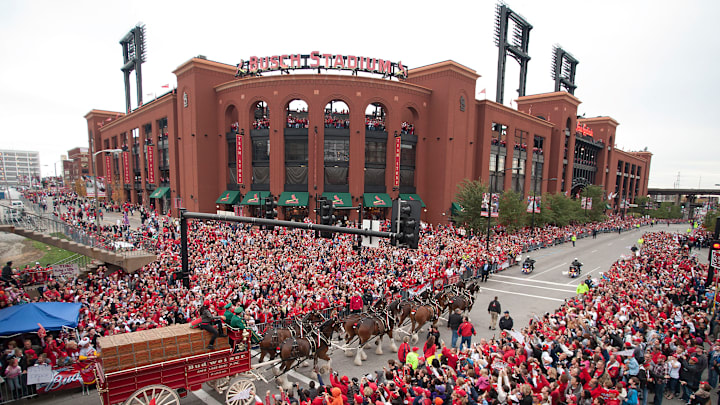AL West - Oakland Athletics, surprisingly (to me, at least)
The Houston Astros, Los Angeles Angels, Oakland Athletics, Seattle Mariners, and Texas Rangers all play in the American League West. This division has seen a lot of turnover in the last five years. Some of the league’s most talented players play in the AL West currently. Historically, one team has seen great success in this division.
The final division to discuss would be the AL West. Ironically, the Oakland Athletics are dripping with history. Their twenty-five division titles, twenty-seven playoff appearances, nine World Series titles, and fourteen World Series appearances make them the closest team to the Cardinals, and a team almost identical to the Cardinals in terms of franchise success (contrary to recent experiences). Oakland is also the oldest franchise in this division. Congratulations, Oakland, you have finally won something recently.
The Houston Astros are the only franchise with a winning percentage over .500 (.501, barely). Had the Athletics not been so miserable these last two years, they would probably be significantly closer to the Cardinals. Oakland, however, does have more than 9,000 wins, putting them the closest to the Cardinals in this statistic. Also, Oakland has forty-one Hall of Famers; the Angels are the next closest at twelve Hall of Famers. Oakland takes category two handily.
Category three refers to organizational culture. Oakland has taken a "Moneyball" approach in the last 20 years: spend as little as possible while squeezing out as much talent as possible. Recently, the Oakland management has taken it upon themselves to trade away any playable player, put players who aren’t ready in uncomfortable roles, and take as many losses as possible with the hopes of moving the team. This hasn’t always been the case for the organization, however. The Coliseum has housed some of the most talented, memorable, and skilled teams in MLB history. The early 2000s and 1930s sported historic teams. This team’s history is lost in many people’s memories. Houston’s recent success has boosted its attendance statistics. Houston also had loads of success as a former NL Central team in the early 2000s. They also field a strong mix of homegrown players and free agents. The Astros do a fine job putting a strong team together. Houston and Oakland tie for category three.
Some of these teams were very surprising to me while others were relatively expected. Throughout baseball, patterns expose themselves. Teams see other successful teams and try their best to imitate that success. It doesn’t always work, however. While few teams can mirror the exact history of the Cardinals, some teams do come close.
